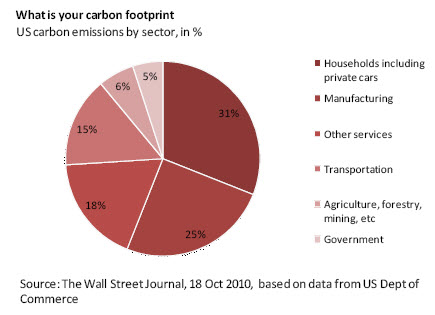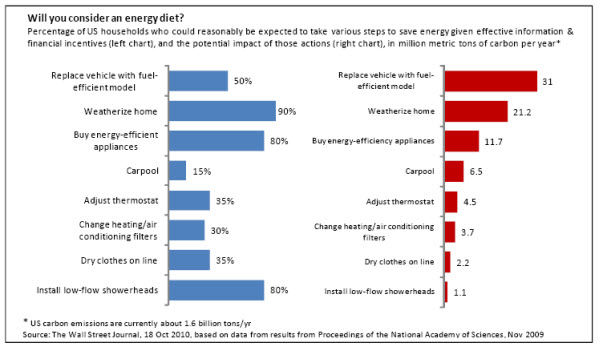This is a sample article from the November 2010 issue of EEnergy Informer.
As any teenager would tell you, peer pressure may be the most effective means of influencing behavior.
When policy makers and utilities embarked on energy efficiency campaigns some 30 years ago, the original focus was on educating consumers how much energy they used and encouraging them in ways and means of cutting back. Consumers, for example, were told how inefficient incandescent light bulbs were compared to compact fluorescent lights (CFL) and encouraged to switch to the latter since it would save them money in the long run. It was an uphill battle since CFLs were an expensive rarity 30 years ago, and utilities had to subsidize their purchase. Low flow showerheads were, and still are, a good way to reduce demand for hot water, another major source of energy use in homes.

These policies have been refined and perfected over the years. In some countries, such as Australia and in Europe, incandescent lights have been banned altogether. There are now standards for energy efficient appliances, tighter standards for new homes and buildings. Yet energy consumption continues to grow — in both absolute and in per capita terms — in most parts of the world. Energy efficiency experts are now looking beyond the traditional means to induce reduced usage. Higher prices help but most studies show that prices have to rise quite a lot before average consumers take notice. Technically speaking, energy consumption is highly price-inelastic.

Running out of the low-hanging fruit, energy efficiency gurus are increasingly focused on ways to influence consumer behavior in ways that will be persistent. Consumers, it turns out, are genuinely interested to do the right thing to help the environment if the sacrifice is not significant. Saving a few dollars is merely icing on the cake but not the prime driver for most.
A promising area of research is to influence consumption through peer pressure. Recent research by psychologists and behavior specialists suggests that people are strongly influenced when they are compared to their peers and neighbors. When they are told, for example, that their average monthly consumption is x% above consumers with similar size homes, they apparently take notice.
OPower, A consultancy based in Arlington, VA, for example, offers a customized home energy report that can be mailed with customer bills to show how their usage compares to others with similar characteristics. Consumers are typically compared to the average and the most efficient in their group – a monthly report card on how they measure against the Joneses.
A dozen US utilities who have tried the scheme report that average household consumption drops by around 2% per and remains there with no financial incentives or rewards. The service costs approximately $10 a year per customer, according to an article in The Wall Street Journal (18 Oct 2010). A 2% drop in average household energy consumption may not sound like a lot, but if applied to a large population of consumers, the numbers add up rather quickly. These claims, however, are occasionally received with some skepticism.
Similar types of behavior are documented in hotels where guests are encouraged to re-use their towels with varying levels of success. It turns out the wording of the placards placed in bathrooms influences the outcome. According to the same WSJ article, a significant number of guests participate if the placard reads, “Help save the environment by reusing your towels,” or something neutral like that.
Participation rate, however, jumps to 75% if the wording is changed to something like, “Join your fellow guests in helping to save the environment.” Even higher numbers take part if the message is more targeted and personalized, such as saying, “75% of guests who stayed in this room re-used their towels.”
Peer pressure, as every teenager will tell you, is a powerful motivator.

